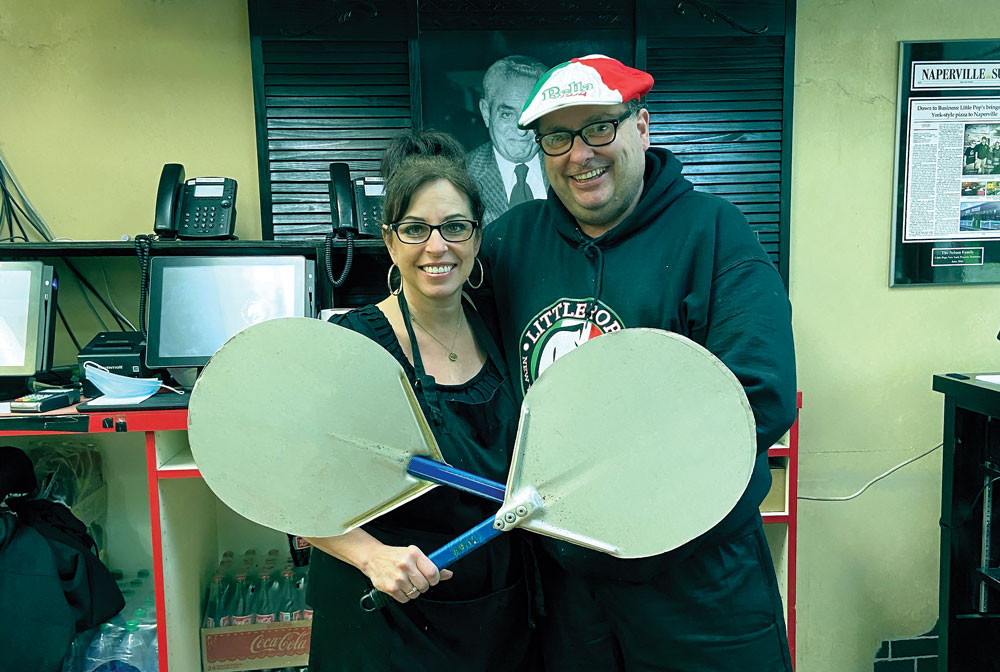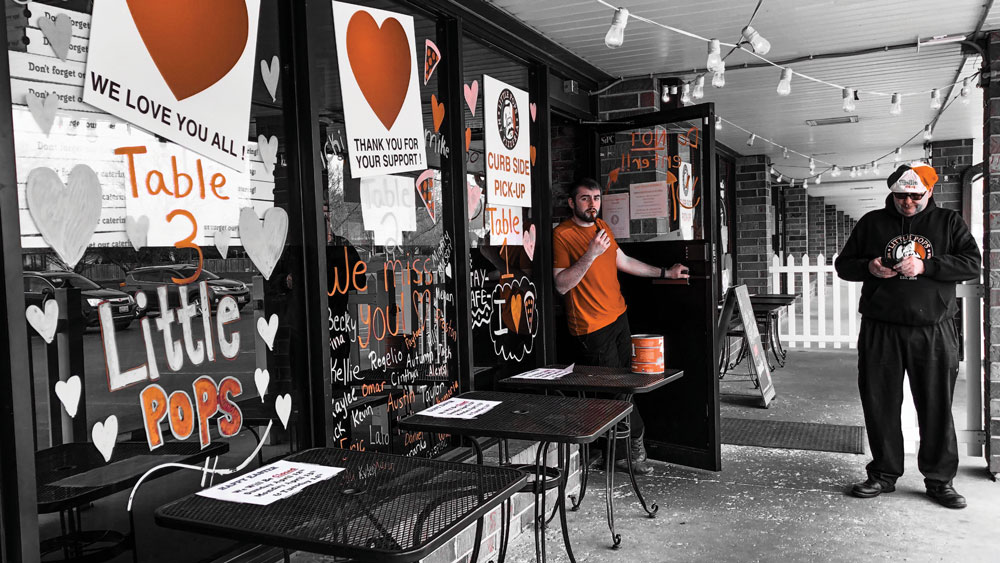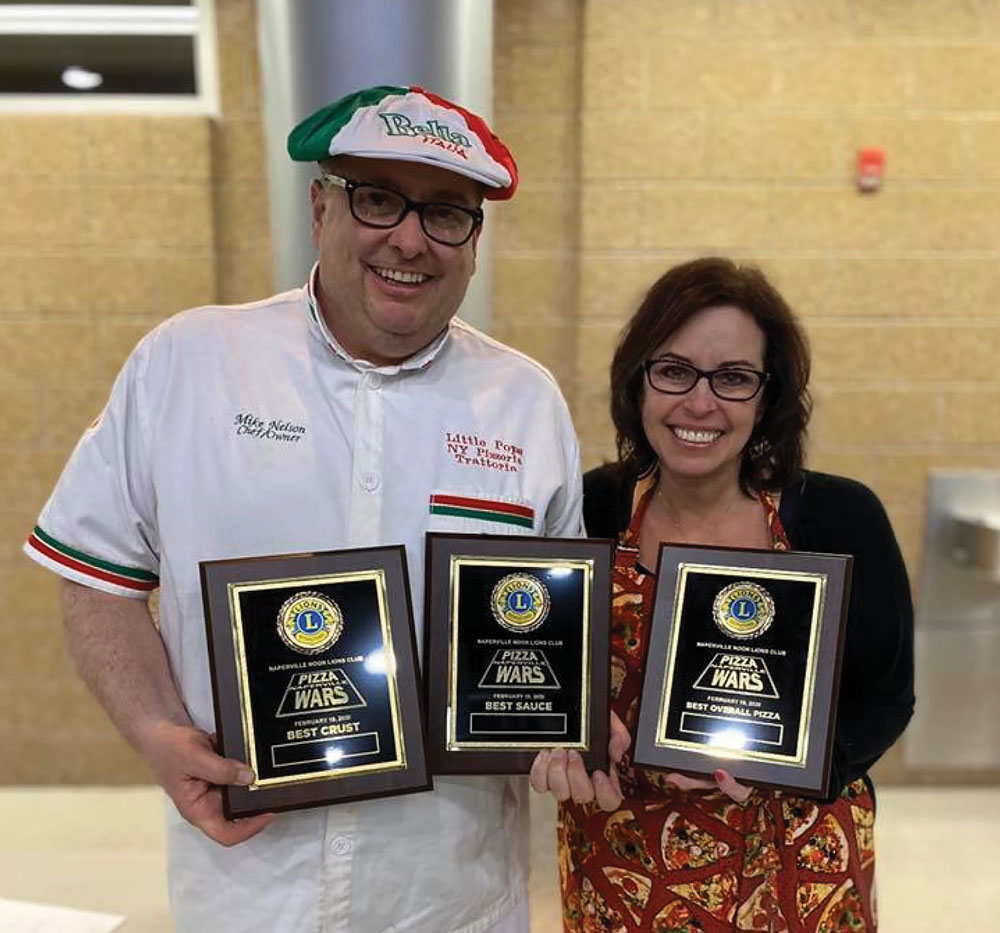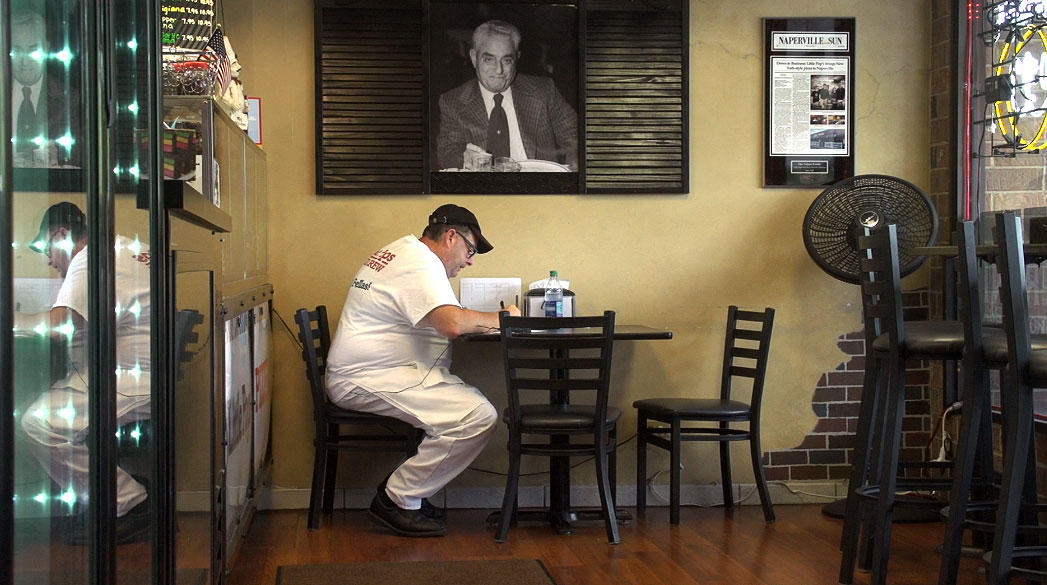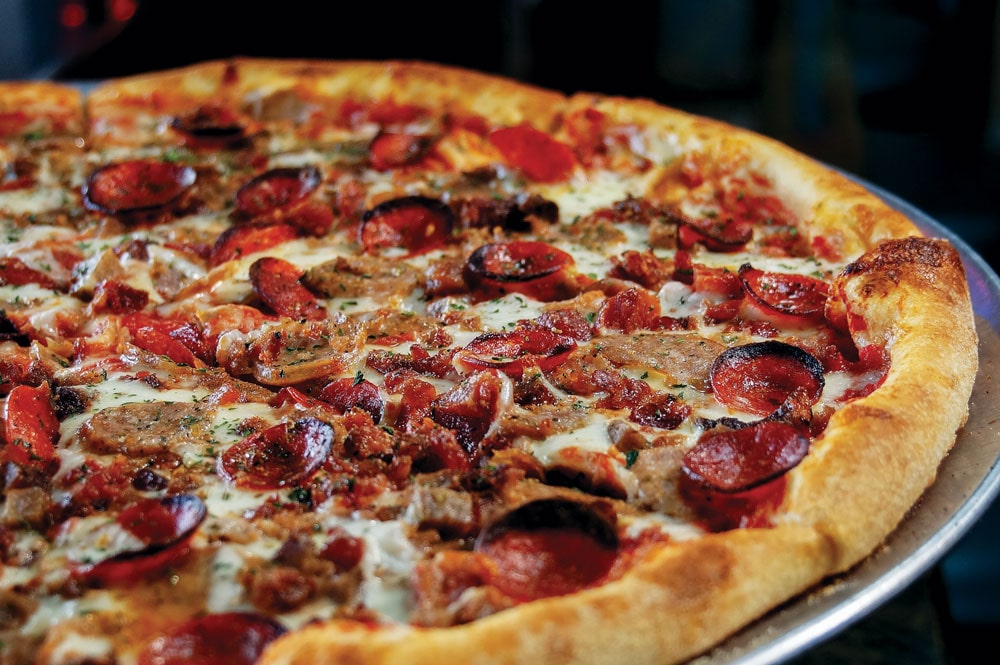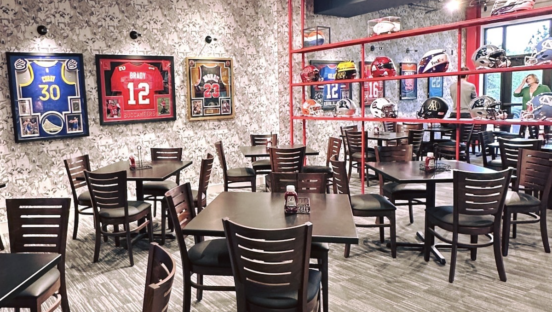Click here for an expanded, long-form, digital-only version of this story.
By Stuart Meyer
Mike and Vicki Nelson left Wappingers Falls, New York, in 2009 to start a promising new life with their three young children in Naperville, Illinois, a suburb of Chicago. They had just sold the commercial snow-removal business they’d spent two decades building into a national company. As part of the deal, Mike would move to the Midwest to continue working for the buyer, they would receive the proceeds of the sale in installments over time, and everyone would live happily ever after.
The end.
But it was just the beginning, as their story became a real punch in the gut. The buyer’s company soon went bankrupt, leaving Mike and Vicki broke and unemployed. They watched helplessly as 20 years of blood, sweat and tears washed down the drain, with the remnants of their former business and future proceeds.
Vicki began driving a school bus part-time to make money. With only a high school education, Mike bounced from dead-end job to dead-end job. It got so bad that members of their church anonymously sent them grocery store gift cards to buy food. Then, in 2014, after multiple false starts in getting their lives back on track and navigating personal bankruptcy, they drove down to Melbourne Beach, Florida, to meet Mike’s parents over spring break and get away from it all.
Living in Naperville, Mike and Vicki missed their favorite New York pizza joints. Authentic New York-style pizza, they felt, was virtually impossible to find amid all the deep-dish pies and thin-crust squares in the Chicago area. When they finally arrived in Melbourne, they met Mike’s parents at the Original Bizzarro Famous New York Pizza restaurant, in nearby Indialantic. That’s when a new idea began to rise within Mike’s entrepreneurial mind, like an overactive ball of dough. Even though the Nelsons had zero experience in the restaurant business, they would soon bring authentic New York-style pizza to Naperville—and start a new life with Little Pops NY Pizzeria Trattoria.
Behind every pizza business is a one-of-a-kind, authentic human story. It’s your most powerful all-purpose business tool.
First, Meet the Pulcinis
Several years later, I would tell the Nelsons’ story in a documentary film called NY Pizza Dreams, released in 2019. But they weren’t the first pizza making family I profiled as a filmmaker. That would be the Pulcinis, the current owners of Naples Pizzeria in Spring Lake Heights, New Jersey. I was a nine-year-old pizza making fanatic when Michael and Lina Pulcini took over the shuttered TJ’s Pizza Pub in my hometown of Elizabethtown, Kentucky, in 1981. My family became close friends with the Pulcinis, and we often feasted at the Pizza Pub for regular meals and most celebratory milestones. At 18, I began working part-time at the Pizza Pub, delivering pizzas and making sandwiches, calzones and pasta dishes. Sometimes, when business was slow, Michael even let me enter his sacred pizza-station lair to stretch a pizza or two.
I loved cooking on busy nights and developed a deep passion for the art of pizza and Italian food traditions. I also experienced firsthand how mom-and-pop pizzerias can quickly become a cherished second home and family to so many. Sadly, by the summer of 1991, a fresh crop of less-expensive chain pizzerias had sprouted up around town, and business at the Pizza Pub began to wilt. The Pulcinis closed their doors for good that summer and moved back to New Jersey, where they opened Naples Pizzeria and still thrive to this day.
The inexplicable loss of Pizza Pub haunted me, and, after nearly 30 years, I still occasionally have a recurring dream in which Michael and Lina return to town to reopen the Pizza Pub. Fortunately, I stayed in touch with the Pulcinis and even shared their story with the world in my short documentary film, Inside the Pizza Box (available on YouTube).
Meanwhile, 23 years after the Pulcinis closed down Pizza Pub and absconded to New Jersey, I discovered Little Pops in Naperville—and another pizza family stole my heart.

After struggling to keep his pizzeria afloat in Elizabethtown, Kentucky, Michael Pulcini made his own comeback with Naples Pizzeria in Spring Lake Heights, New Jersey.
A Family Affair
Although Mike and Vicki Nelson knew nothing about the restaurant business, their lives were steeped in family food culture and traditions. Mike grew up around DeLenos, his uncle Tony’s Italian family restaurant, which operated for decades as a local institution. On Vicki’s side, every Sunday, her grandparents hosted family dinners filled with the comforting aroma of frying meatballs and fresh gravy. Meanwhile, Vicki’s brother, Louis, and her nephew, Steven, operated a pizzeria in Maybrook, New York, named after their grandfather, Little Pops.
After finding a space for their own pizzeria in Naperville, the Nelsons turned to Louis and Steven, who shared the family recipes and guided them through the process of opening and running a pizzeria. To honor Vicki’s grandfather, they would also name their pizzeria Little Pops. They hired an experienced pizza maker and staged a soft opening in mid-2014. Almost immediately, the phones started ringing and never stopped as they struggled to keep up with all the orders with only one experienced pizza maker. They made a lot of mistakes and endured various minor catastrophes in the coming months. Yet none of that mattered as overjoyed East Coast expats from all over the Chicago area converged upon Little Pops to get their slice of home and a dose of authentic New York food culture.

The Nelsons launched Little Pops with a batch of New York-style family recipes, such as the Margherita, shared with them by Vicki’s brother and nephew.
When I took my first bite of a Little Pops slice, tears of joy welled up in my eyes—and it wasn’t only because I had just burned every square inch of my mouth. My own recurring dreams of the Pizza Pub and New York-style pizza were beginning to merge with Mike and Vicki’s pizza dream. I again had the chance to share a family’s legacy in creating joy, connection and belonging in the lives of their customers through New York pizza and food culture.
The Nelsons’ backstory was so compelling and full of humbling struggles that I knew anyone could relate to it. I contracted with them to produce the feature documentary about Little Pops that became NY Pizza Dreams. We also worked out an arrangement for my company, Social Frequency (i.e., me), to continue telling Little Pops’ story as a marketing strategist, media creator and business analyst.
The film has represented a major turning point in Little Pops’ story. It also reveals the power of storytelling as a marketing strategy for a pizza restaurant.
Upon the release of NY Pizza Dreams in February 2019, Little Pops almost immediately began doubling monthly revenue growth, year over year, which has become the new norm ever since.
Lessons in Storytelling
Upon the release of NY Pizza Dreams in February 2019, Little Pops almost immediately began doubling monthly revenue growth, year over year, which has become the new norm ever since. In 2019 vs. 2020, there was an overall 36% increase in year-over-year revenue growth. In fact, Little Pops has outgrown its current space, and an expansion plan is in the works.
The film shone a humanizing spotlight on the Little Pops story, making customers feel more attached to Mike, Vicki and the pizzeria. But you don’t have to get featured in a documentary to build those lasting connections. Here are some tips for telling your story in such a compelling way that readers want to be a part of it—and never want it to end.
Lesson 1: Your story is as important as your pizza—maybe more important. Behind every pizza business is a one-of-a-kind, authentic human story. It’s your most powerful all-purpose business tool. The human brain is hardwired for stories, because they are simulated personal experiences for which we form an attachment. Loyalty is born when staff, customers and entire communities form an attachment to your story as it continues to unfold. A new piece of our New York pizza dream unfolds every day at Little Pops, and we make everyone a part of that story. Our story serves as a guide for ideas, decision making, problem solving, interactions and finding our way out of the “weeds.”
Lesson 2: You are the main character in your story. Stories require a main character with whom we form a powerful attachment. As the pizzeria owner, you are that main character, and your pizzeria is your stage. If you stay tucked away from view in the kitchen all the time, it’s tough to play that role. On busy and slow nights alike, Mike prioritizes spending time with customers at Little Pops. He strikes up conversations with each customer using observation, humor and wit. And he listens to what’s going on in their lives.
If you think you’re the only person in your restaurant who can make pizza or prepare dishes, you’ll struggle to carve out time to be the main character of your story in the eyes of customers. Hire and train someone who can give you more time to make a meaningful connection with your customers. And treat your employees as allies and supporting characters in your story—be careful to not turn them into villains.
Lesson 3: Great stories are rooted in struggle and humble beginnings. The human brain is also hardwired to help others who are struggling, especially those with whom we share a connection. Your story should include—and never lose sight of—those humbling moments of struggle you’ve faced in your dream to build a successful pizzeria. Even more importantly, be willing to be vulnerable when you find yourself in a major struggle that threatens your ongoing story. The current pandemic would be an excellent example. Like everywhere else, panic-fueled scrambling kicked in at Little Pops when Illinois’ governor issued a stay-at-home order. Despite this plot twist, the whole team remained united around the story, and Little Pops was quick to involve the neighborhood in the story by offering specific ways they could help us save our dream.
Lesson 4: Create an engaging setting for your story. Your pizzeria is the setting of your story and an important place for your regulars. Beyond the physical space, think about what your pizzeria represents in the lives of those who love everything you do and how the neighborhood pizzeria is a micro-community within a community. We refer to Little Pops as its own little neighborhood, because everyone who walks through the door is viewed as a “neighbor” and treated accordingly.
If you think you’re the only person in your restaurant who can make pizza or prepare dishes, you’ll struggle to carve out time to be the main character of your story in the eyes of customers.
Lesson 5: Make your customers part of the story. While stories create a simulated personal experience in our brains that forms an attachment, you can attain new levels of loyalty when you involve your customers in your story. From community fundraisers and special causes to social media contests, testimonials and shared positive online reviews, find a way to let your customers play a role. NY Pizza Dreams has offered various ways to involve our neighborhood in Little Pops’ story. We hosted a virtual and physical YouTube premiere to release the film. We chose a Monday night, when the pizzeria was usually closed, and hosted a special “golden ticket” watch party at Little Pops. Tickets were offered via a social media contest, and we provided a big screen and a lot of free pizza and pasta. Throughout the evening, we shot video and photos and posted them to social channels as part of the ongoing story so that everyone could feel like they were present.
Lesson 6: Social media is your main storytelling channel. Every social post should be rooted in your daily story, as derived from your backstory and culture. As the main character in your story, you are also the chief storyteller. While you can hire people to manage your social media strategy and channels, they won’t be in the pizzeria every day as great stories unfold all around you. Become proficient and active on social media, sharing regular daily stories with photos and videos that advance your backstory and culture. Let your authentic personality shine and provide a “frontline” point of view.
Lesson 7: A story features a protagonist on an uncertain adventure toward a meaningful goal. Great stories follow this formula, which mirrors the human experience—it’s something we all have in common. Think about this formula in terms of your approach to telling your backstory, your daily story, and the story about the future you are working to “write” in your great pizza adventure! NY Pizza Dreams, for example, is the inspiring story of a humble New York family who turned hard times into a New York-style pizza movement in Chicago-style pizza territory, all through faith, hope, love and a family legacy.
Stuart Meyer is a lifelong pizza making fanatic and founder/chief storytelling officer with Social Frequency Media Communications. He can be reached at stuart.meyer@socialfrequency.us.

